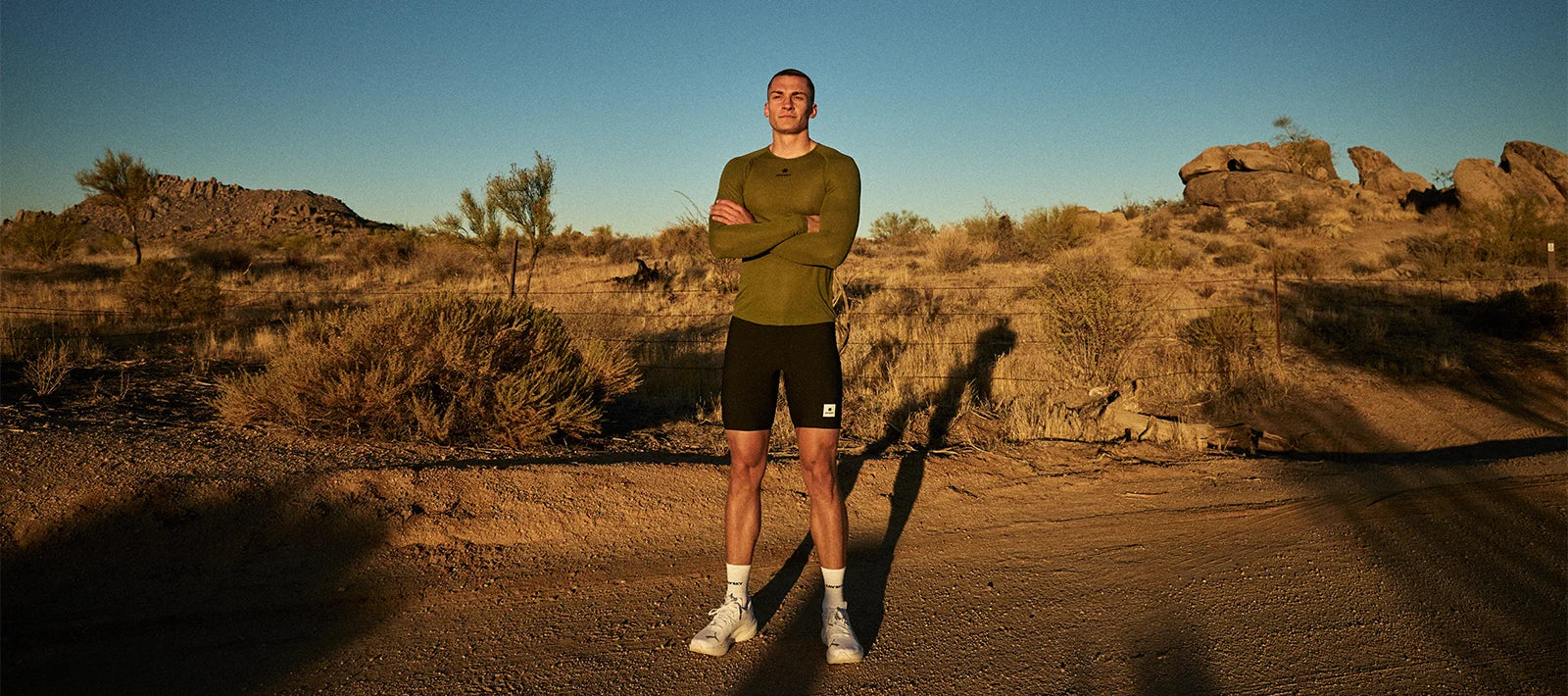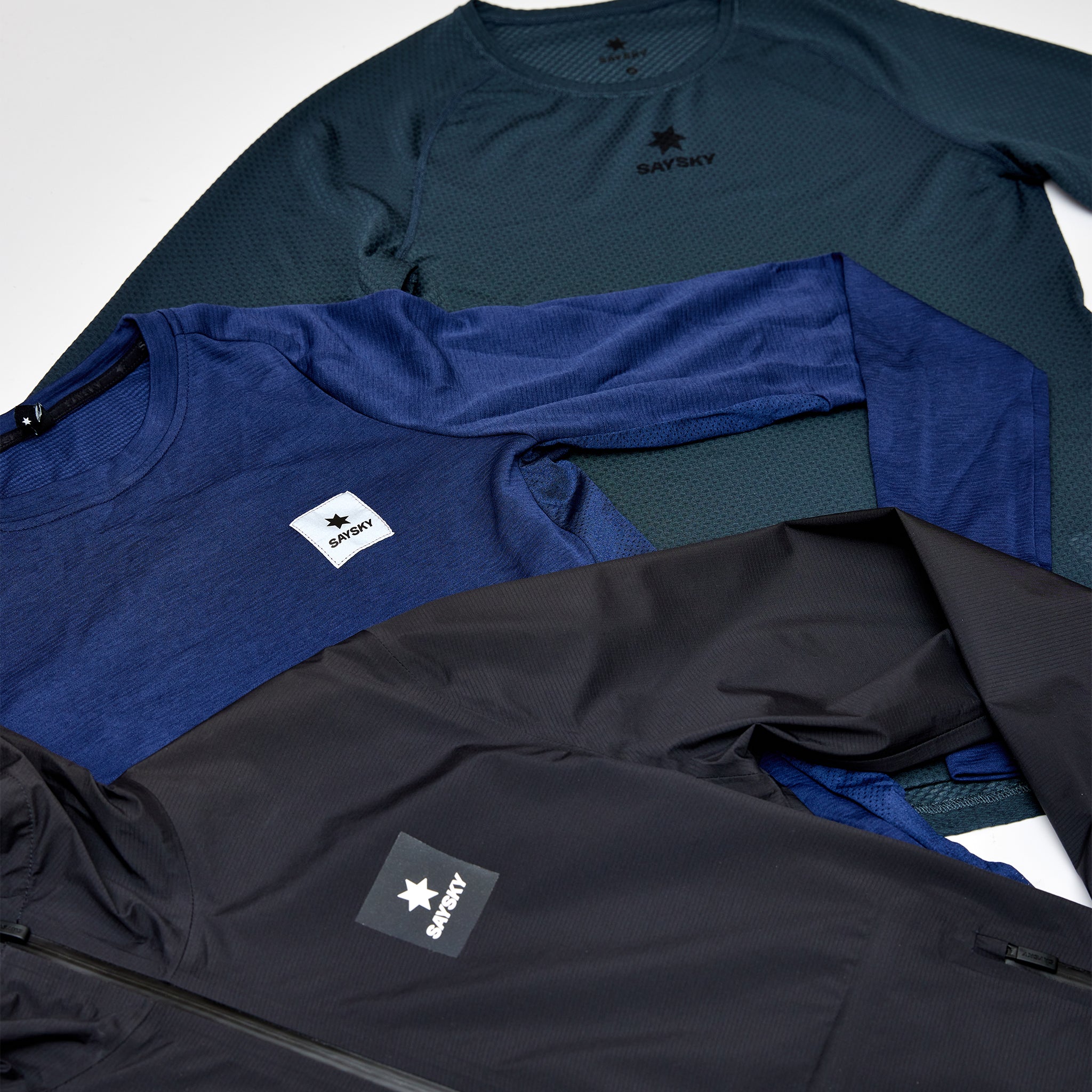
SAYSKY Layering Guide
SAYSKY LAYERING GUIDE - THE TRANSITIONAL SEASON
As we transition from winter to spring and summer, we look forward to longer days and rising temperatures. Mornings can still be chilly, but the sun is gaining strength, making it the perfect time to adjust your running gear. It’s all about finding the right balance -enough layers to stay warm in the early hours while ensuring you don’t overheat as the day warms up. We’ve put together the ultimate guide to help you dress smartly during this seasonal shift.
In this guide, you’ll find answers to:
- The best layering strategies for fluctuating temperatures
- How to adjust your outfit as the weather changes
- Extra protection against wind and unpredictable spring showers
Spring weather can be unpredictable -some days remain cool, while others feel warm and sunny. This transition from winter to spring calls for a flexible approach to your running gear so you’re always dressed for the conditions.
 MORE LAYERS OR LESS LAYERS?
MORE LAYERS OR LESS LAYERS?
The art of layering involves combining technical fabrics to maintain comfort, regulate temperature, and enhance performance. After this guide you’ll be able to experiment with different combinations of layers during your training to find the perfect balance of comfort, performance and protection that is best suited for your preferences.
SO HOW MANY LAYERS ARE THERE?
When preparing for a run as fall transitions into winter, it’s essential to organize your outfit into three layers. Each layer plays a vital role in keeping you comfortable and protected from the elements. Be sure to consider the temperature and weather conditions to ensure you dress appropriately for your run.
The 3 layers that you should know about are.
- Base layer: moisture management
- Middle layer: insulation
- Outer layer: weather protection
BASE LAYER - MOISTURE MANAGEMENT
The foundation of your running outfit. Its primary function is to wick moisture away from your skin, keeping you dry and comfortable. This means, when you sweat, this layer regulates your body temperature - We’re offering three different kinds of base layers - Mesh, Merino and Flow. Each with their own unique functions and purpose for different kinds of weather. For the cooler days we recommend Merino and Flow, as they are the ones that will provide you with the most warmth. You can find them all here

MIDDLE LAYER - INSULATION
The middle layer adds insulation to trap heat and provide warmth. It acts as a buffer against the cold while still allowing moisture to escape. Depending on the temperature, this layer can be adjusted to ensure your optimal comfort. For the transitional season we recommend our Pace & Flow long sleeves. If it gets too cold you would be smart to choose our fleece products.

OUTER LAYER - WEATHER PROTECTION
This is your first line of defense against the elements. It protects you from wind, rain, and snow, allowing you to run comfortably in various weather conditions. In the SAYSKY universe, we offer a variety of waterproof jackets, lightweight windbreakers, vests and fleece products.

EXTRA PROTECTION?
On some days, the weather in the transitional season can be brutal and unpredictable. From surprise rain showers to unexpected cold snaps, staying prepared is essential. That's why versatile accessories become your best friends during these times. We’ve got a selection of everything from beanies, scarfs, gloves, caps, socks and more. Find them all here


